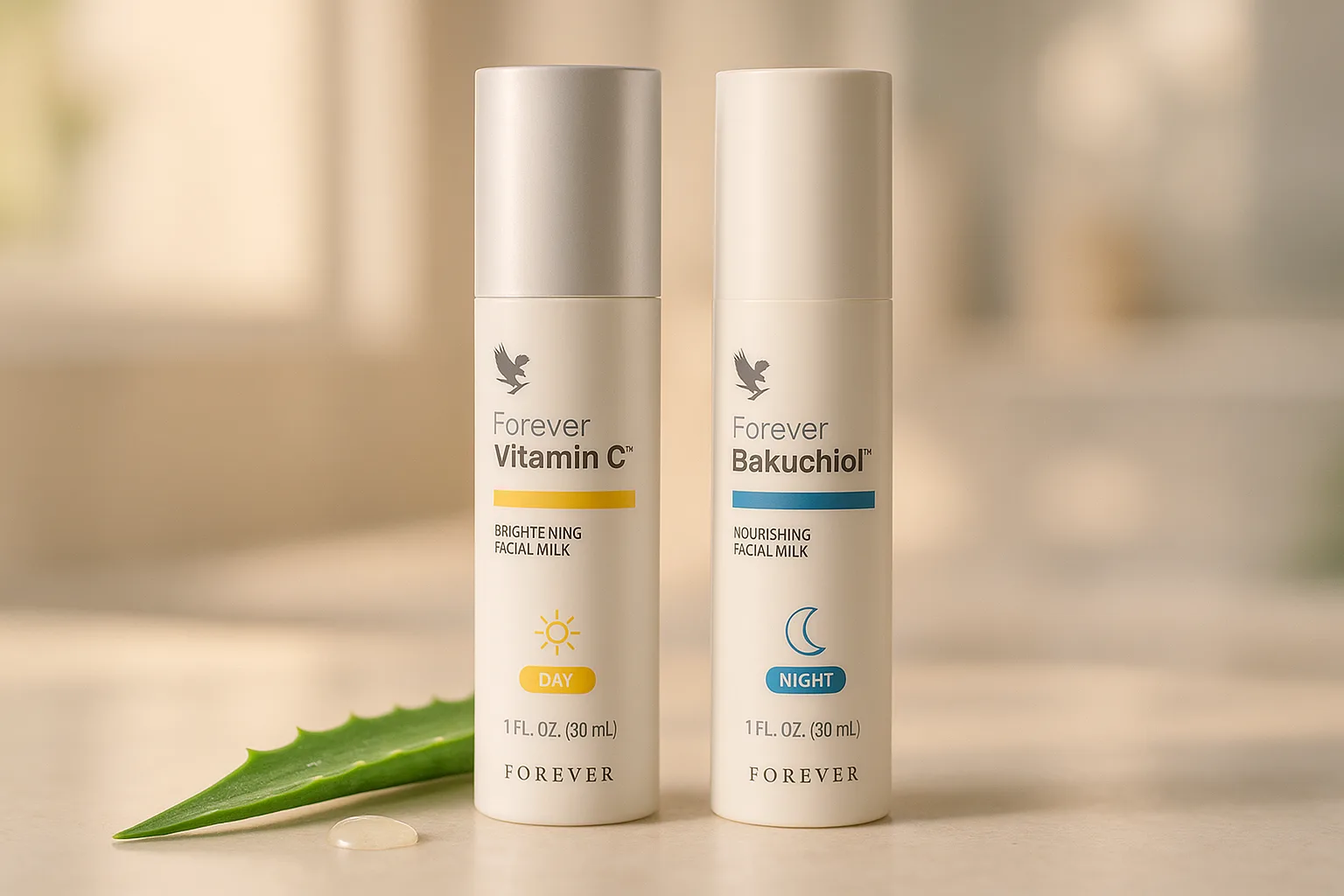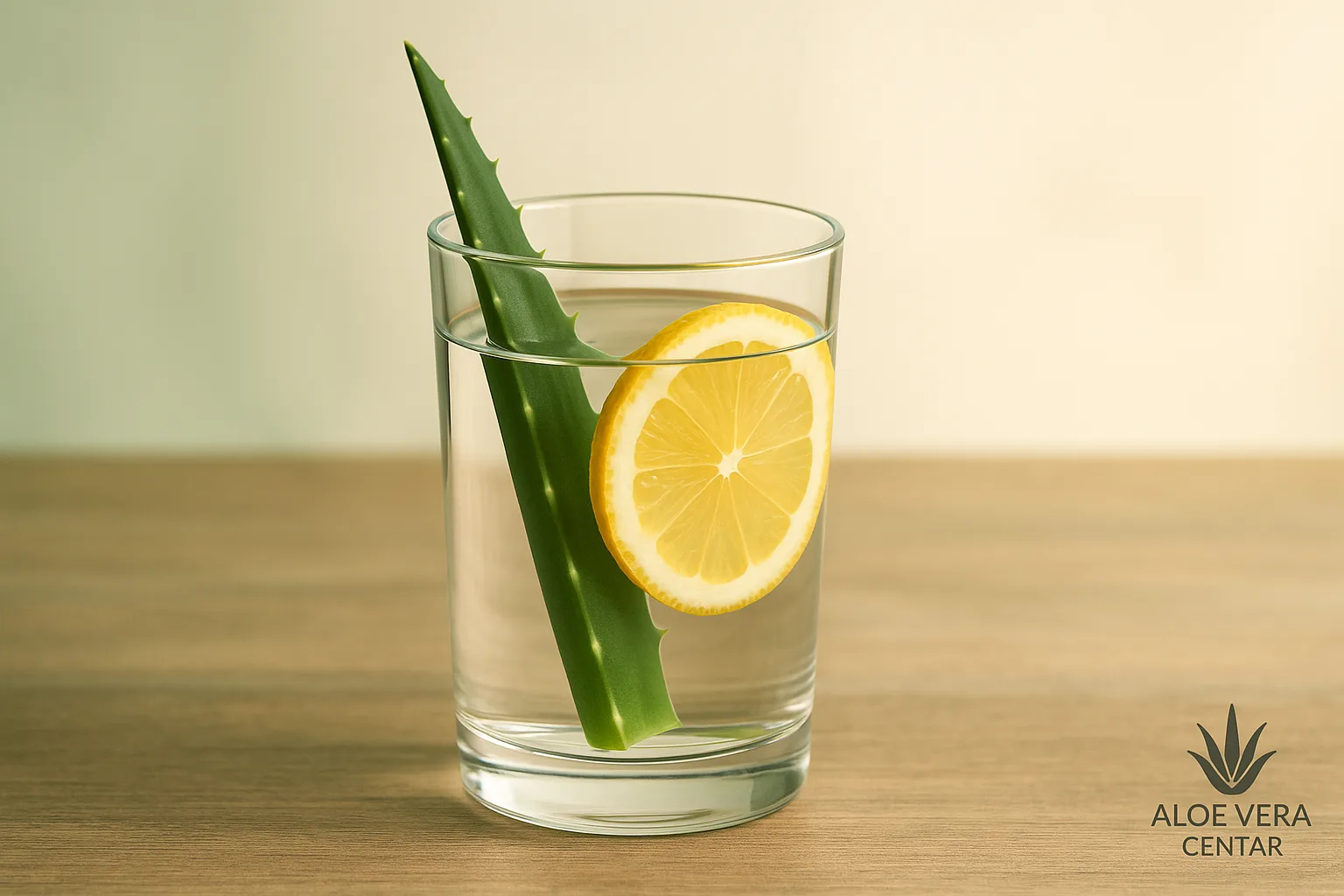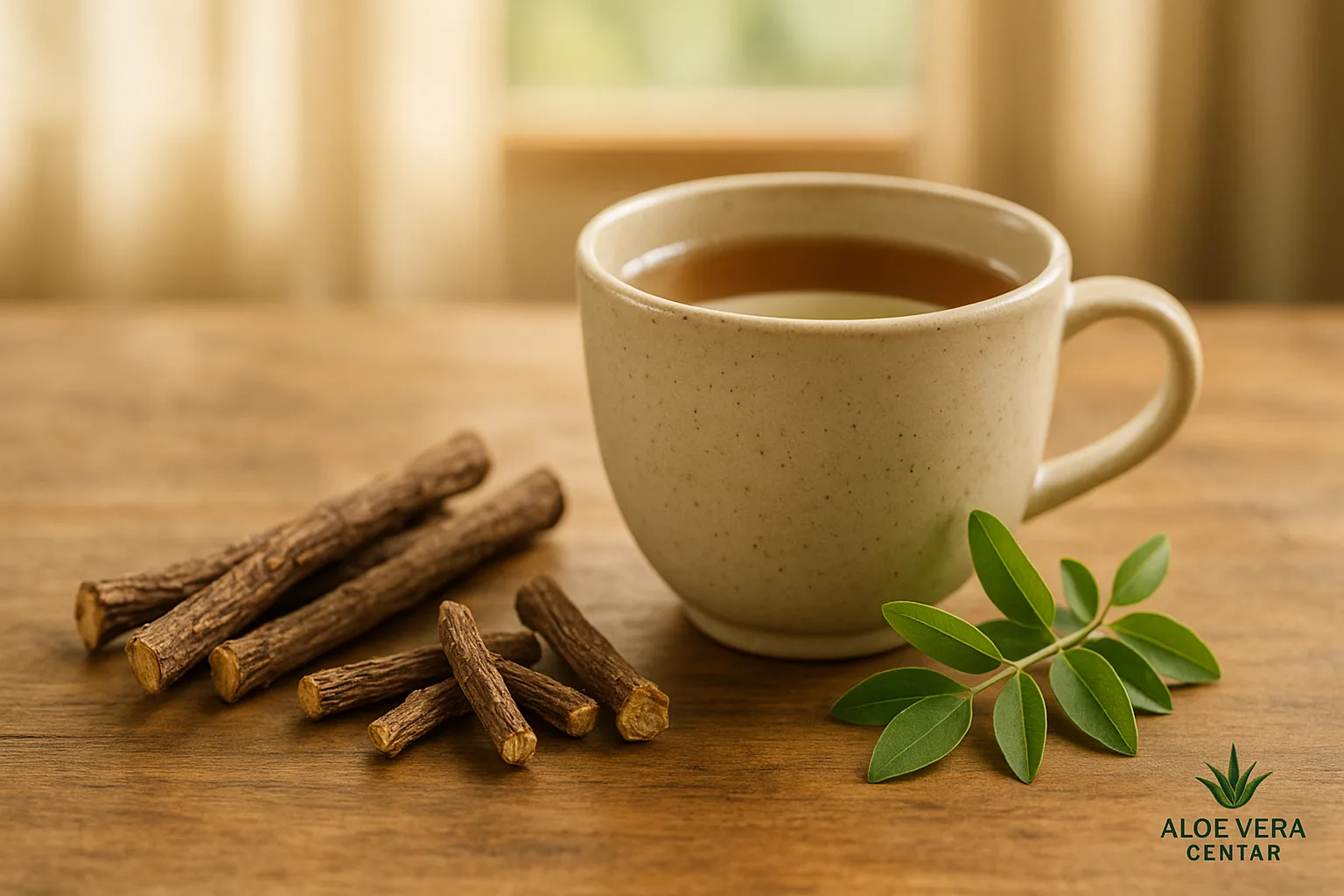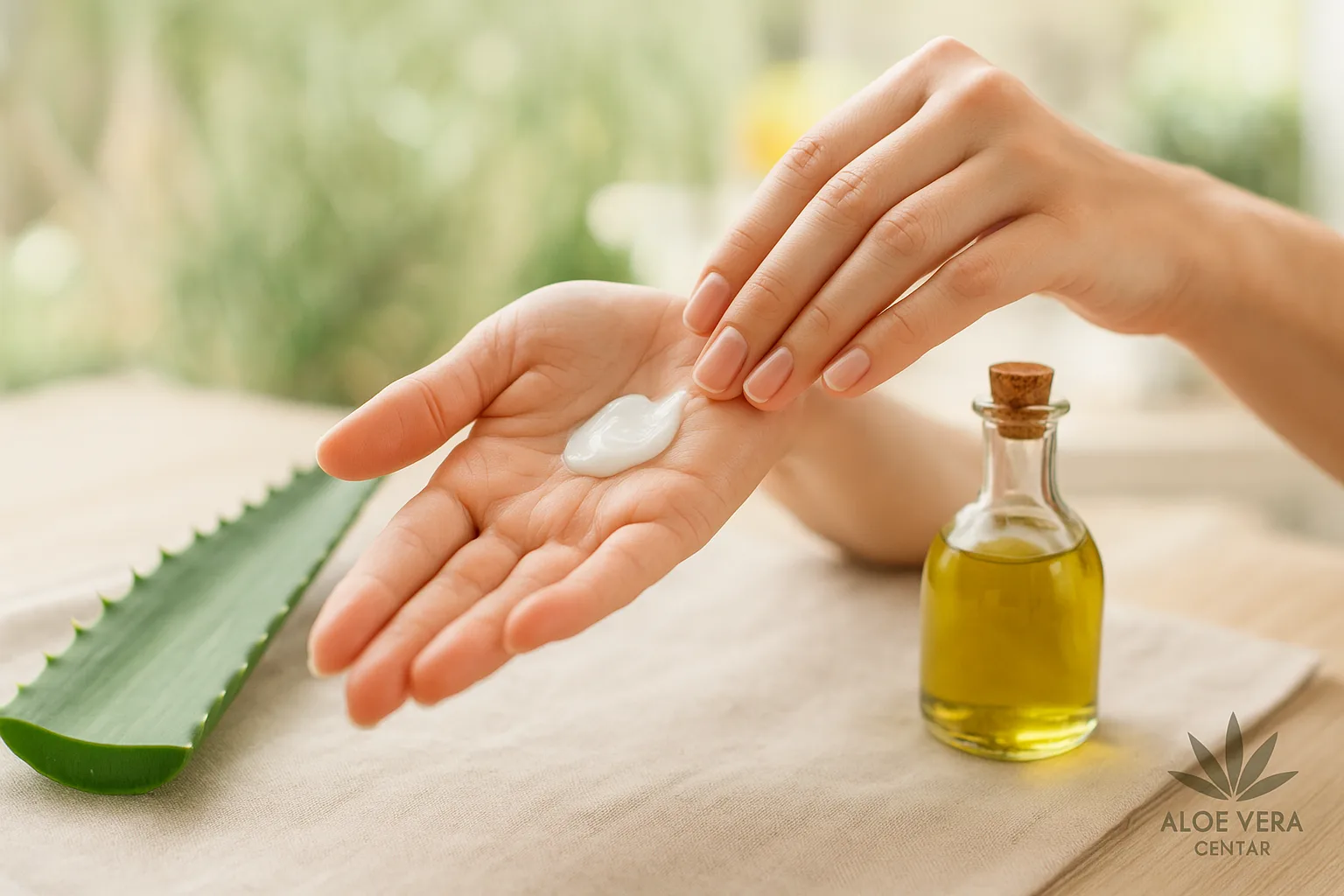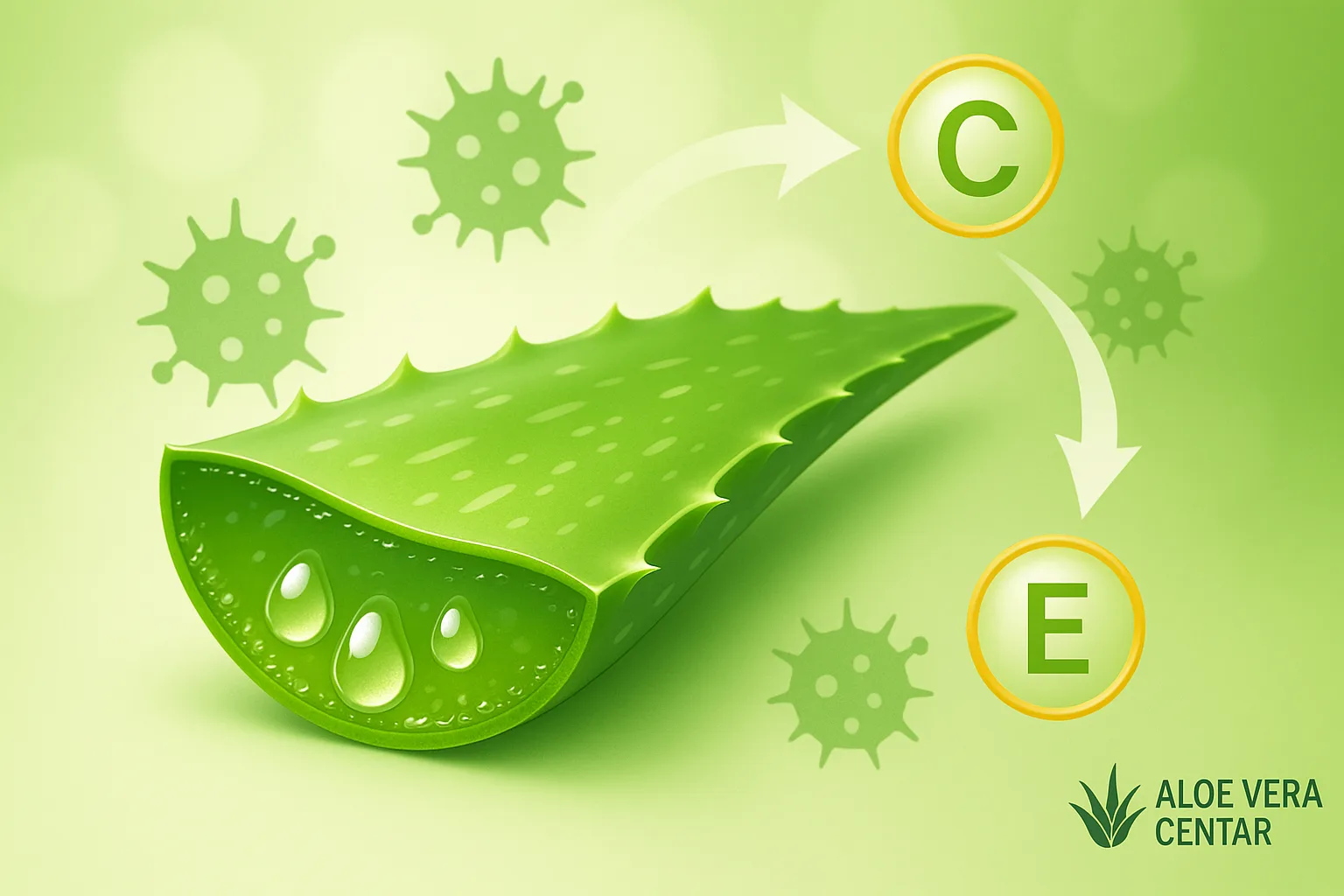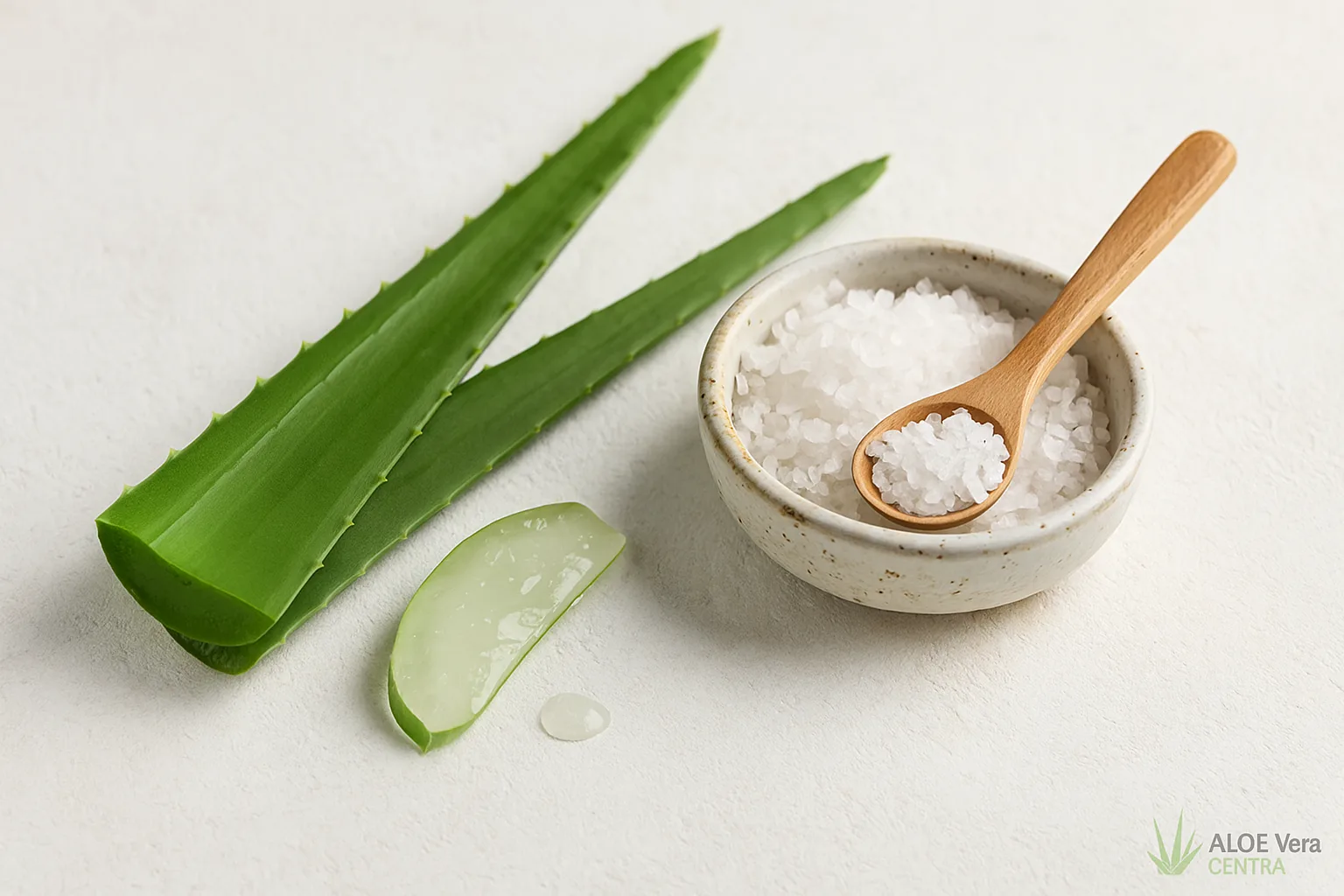
Natural Scalp Scrub: Aloe and Sea Salt Combination
Natural Scalp Scrub: Aloe and Sea Salt Combination
Did you know that a healthy scalp is one of the prerequisites for shiny and voluminous hair? Over time, dead skin cells, excess sebum, and styling product residue can accumulate on the scalp, leading to clogged follicles, irritation, and slower hair growth. This is where a natural scalp scrub comes in – a simple but highly effective ritual that allows the scalp to breathe and hair to grow better.
In this article, we reveal how the combination of aloe and sea salt can serve as an excellent DIY scrub. The blend of aloe vera’s hydrating properties and sea salt’s abrasive (yet gentle) action makes this preparation a true treasure in natural hair care. You’ll learn why scalp exfoliation is important, how to prepare the mixture, and how to integrate this little “spa treatment” into your routine. If you’re ready to transform your scalp – keep reading and discover all the details!
1. Why is Scalp Exfoliation Important?
For most of us, the routine hair care ritual comes down to shampooing and possibly applying conditioner. However, just like facial and body skin, the scalp also needs periodic deep cleansing and renewal. Here are several reasons why scalp exfoliation is a valuable addition to your routine:
- Removes buildup – Dead cells, styling product residue, and excess sebum can accumulate and create a “barrier” to healthy hair growth.
- Stimulates circulation – Massage with exfoliation improves blood flow to hair follicles, which can contribute to stronger and faster hair growth.
- Reduces dandruff and itching – Regular scalp exfoliation helps eliminate flakes and keeps the scalp cleaner and fresher.
- Regulates sebum production – Proper exfoliation can help maintain balance between oily and dry scalp conditions.
2. Why the Combination of Aloe Vera and Sea Salt?
Aloe vera is already widely known for its hydrating, soothing, and anti-inflammatory properties. It’s rich in enzymes, vitamins, and minerals that nourish the skin and help maintain its balance.
On the other hand, sea salt (especially unrefined, rich in minerals like magnesium) acts as a gentle but effective abrasive. It removes dead cells and excess oils while stimulating circulation.
By combining these ingredients, you get a blend of hydrating and exfoliating properties – gentle enough yet powerful enough to let your scalp “breathe” and facilitate nutrient transport to hair follicles.
3. How to Prepare a Natural Scalp Scrub?
Making the scrub is very simple, and you probably have most ingredients at home. Here’s a basic recipe, but feel free to play with ratios and additional ingredients to create a product ideal for your hair type.
3.1. Ingredients
- 2 tablespoons of sea salt (fine granulation for sensitive scalps, coarser for oilier scalps)
- 2-3 tablespoons of fresh aloe vera gel (or recommended dose of Forever Aloe Vera Gel from Forever Living’s range)
- 1 teaspoon of olive oil (or other carrier oil, like jojoba, if you want additional hair shine)
- (Optional) 1 drop of peppermint or lavender essential oil for a refreshing and soothing effect
3.2. Instructions
- Choose a suitable bowl – Put the sea salt in it.
- Add aloe vera gel and gently stir with a spoon until it combines with the salt.
- Add olive oil and, if desired, essential oil. Mix again until you get a consistent paste.
- Be careful with salt quantity – If you notice it’s too “grainy,” you can add more aloe or oil to make the scrub gentler.
4. How to Properly Use the Scalp Scrub?
After preparing the mixture, follow these guidelines for safe and effective application:
- Start with wet hair – It’s best to apply the scrub before shampooing or between shampoo and conditioner.
- Take a small amount – Apply it to your fingers and gently massage into the scalp. Focus on areas where you notice the most buildup or oil (e.g., crown area, behind ears, etc.).
- Use circular, gentle movements – Too much pressure could irritate the skin. A few minutes of massage is enough for the salt to dissolve and remove dead cells.
- Rinse with warm water – Keep in mind that salt granules can get stuck in hair, so rinse thoroughly. Afterward, you can continue with your usual shampooing.
- Apply 1-2 times monthly – Depending on your hair and scalp type. If your scalp is oilier, you can exfoliate twice monthly. For dry or sensitive scalps, once monthly is sufficient.
5. Who Can Benefit from Aloe and Sea Salt?
Generally, scalp exfoliation is recommended for people who:
- Notice their scalp and hair getting oily quickly.
- Have dandruff and flakes, with scalp itching.
- Use many styling products (hairspray, gel, mousse) and want to remove them thoroughly.
- Want to promote hair growth by improving circulation and nutrient flow.
However, be cautious if your scalp is extremely sensitive, severely irritated, or has open wounds – then it might be worth waiting for the skin to calm down or consulting a dermatologist.
6. How to Support Scalp Health from within?
While scalp exfoliation is beneficial for surface care, remember that hair and scalp health also comes from within. Some helpful measures:
- Balanced diet – Adequate intake of protein, vitamins (especially A, C, E), zinc, and iron.
- Hydration – Drink enough water throughout the day; dry scalp is often a sign of dehydration.
- Supplements – Products like Forever Aloe Vera Gel can provide nutrients and enzymes that generally support skin and hair health.
- Stress management – High stress and insomnia significantly affect hair appearance and tissue regeneration.
7. Connection with Forever Living Range
Using Forever Aloe Vera Gel or other Forever Living products (e.g., Forever Aloe-Jojoba Shampoo) can be a good complement to your DIY approach. High-purity aloe vera from Forever Living’s range ensures quality ingredients for scalp care, and if you want to drink aloe beverage to strengthen skin from within, special offers can provide additional benefits.
The synergy of internal and external care usually gives the best results. Along with scalp exfoliation, consider regular consumption of aloe beverages, omega-3 fatty acids, vitamins, and minerals that participate in creating and strengthening hair structure.
8. Frequently Asked Questions (FAQ)
1) how Often should Scalp Exfoliation be Done?
It depends on your hair and scalp type. Oilier scalps may benefit from exfoliation twice monthly, while sensitive scalps (or dry hair) might need exfoliation only once monthly or even less frequently. Pay attention to skin reaction; if it becomes too dry or irritated, reduce the frequency.
2) Can I Use Regular Table Salt Instead of Sea Salt?
You can, but sea salt is generally considered better for cosmetic preparations due to its mineral content (magnesium, calcium, potassium, etc.). Table salt (especially refined) has fewer beneficial minerals and is potentially harsher on the skin. However, in the absence of sea salt, table salt can serve in smaller amounts.
3) is Exfoliation Safe for Colored Hair?
Exfoliation might somewhat remove color residue from the scalp, but it’s generally not too aggressive for the hair itself. However, if you’ve recently colored your hair, it’s recommended to wait at least a week for the color to stabilize before introducing gentle scalp exfoliation.
4) Can Scalp Exfoliation be Used for Dandruff and Seborrheic Dermatitis?
Gentle exfoliation can help remove flakes and reduce dead cell buildup. However, for more serious forms of seborrheic dermatitis or other issues, consultation with a dermatologist is recommended. Sometimes medical shampoos or treatments are necessary.
Conclusion: Refresh your Scalp and Promote Healthy Hair Growth
Natural scalp scrub with a mixture of aloe vera and sea salt is an ideal DIY way to deep clean the scalp, remove buildup, and stimulate microcirculation. As a result, your hair can become stronger, shinier, and more resistant to external influences. Remember to adjust ingredient ratios according to your hair and scalp type, and always ensure gentle application without excessive rubbing.
Along with this “external” care, regular and balanced nutrition and supplements (like high-quality aloe vera gel from Forever Living’s range) can further contribute to hair health and growth “from within.” For the perfect combination, integrate these tips into your routine and take advantage of special discounts if you’re looking for products that will further support your “aloevera-center” philosophy. With regular scalp and hair care, you’ll notice a difference not only in appearance but also in the confidence that healthy and beautiful hair brings.
Want more ideas for natural hair and skin care? Check out our recipe for homemade aloe mask for dandruff-prone hair or explore natural body scrub that you can easily make at home. If you’re interested in additional rituals, look into facial scrub and discover how to refresh your complexion. For complete care, check out Aloe First spray – a practical ally for both skin and hair. If you’re concerned about hormonal balance, read the article about thyroid and safe combination of iodine and supplements. All these topics together create a comprehensive approach to health and beauty.
Note: Information from this article is for informational purposes and does not replace professional dermatological advice. If you notice serious scalp or hair problems, consult a doctor or hair specialist.

